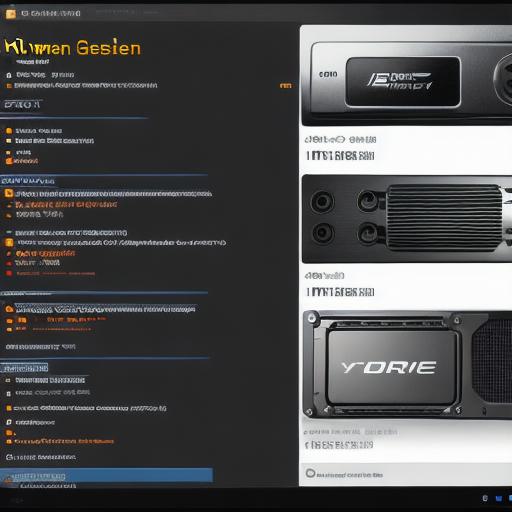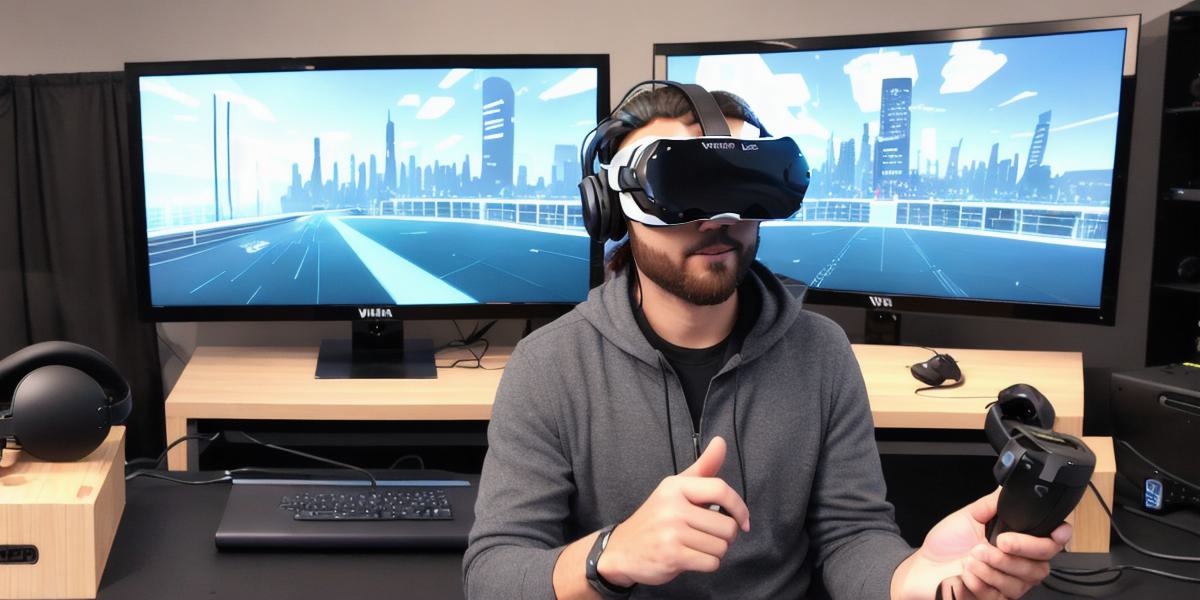Virtual reality (VR) technology has come a long way since its inception, and now more than ever, it’s becoming increasingly popular for gamers of all ages. With the ability to provide immersive and interactive gaming experiences, VR has opened up new opportunities for game developers to create truly unique and engaging games that push the boundaries of what’s possible.
But developing a VR game can be a complex and time-consuming process, requiring specialized skills and tools to create an enjoyable and seamless experience. That’s why we’ve compiled this comprehensive guide to the best virtual reality game development tools available for developers, from hardware to software, to help you get started on your journey to creating VR games that will captivate audiences around the world.
Hardware Tools for Virtual Reality Game Development
When it comes to building a VR game, having the right hardware is crucial. Here are some of the most popular and powerful VR systems currently available:
Oculus Quest 2
The Oculus Quest 2 is a standalone VR headset that offers incredible performance and flexibility for game development. It has a resolution of 1832 x 1920 pixels per eye, making it one of the highest-resolution VR systems on the market. The Oculus Quest 2 also features a powerful processor and graphics card, allowing developers to create highly detailed and immersive games that run smoothly even on lower-end systems.
HTC Vive Pro Eye
The HTC Vive Pro Eye is a high-end VR headset that delivers stunning visuals and precision tracking for game development. It has a resolution of 2160 x 2160 pixels per eye, making it one of the highest-resolution VR systems available. The HTC Vive Pro Eye also features advanced eye-tracking technology, allowing developers to create more realistic and interactive experiences that respond to user movements in real time.
Sony PlayStation VR
The Sony PlayStation VR is a popular choice for gamers who want to experience VR gaming on their existing PlayStation systems. It offers high-quality graphics and immersive gameplay, making it an ideal platform for game development. The Sony PlayStation VR also has a wide range of games available, giving developers access to a large and engaged user base.
Software Tools for Virtual Reality Game Development
Once you have your hardware set up, it’s time to choose the right software tools to help you bring your VR game to life. Here are some of the most popular and powerful VR development software available:
Unity
Unity is one of the most widely used game engines in the industry, and it also has strong support for VR development. With
Unity
, developers can create games for a wide range of platforms, including VR, using a single codebase.
Unity
offers a powerful set of tools for creating interactive and immersive experiences, making it an ideal choice for VR game development.
Unreal Engine
Unreal Engine is another popular game engine that has strong support for VR development. It offers a wide range of features for creating realistic and interactive environments, making it an ideal choice for developers who want to create highly detailed and immersive games.
Unreal Engine
also has strong support for cross-platform development, allowing developers to bring their games to multiple platforms with ease.
Epic Games Launcher
The
Epic Games Launcher
is a popular platform for game developers that offers a wide range of tools and resources for creating VR games. It includes a built-in code editor, as well as support for importing and exporting assets, making it easy to work with existing projects or start from scratch. The
Epic Games Launcher
also has strong support for cross-platform development, allowing developers to bring their games to multiple platforms with ease.
Case Studies: Real-World Examples of Successful VR Game Development
Now that we’ve looked at the hardware and software tools available for VR game development let’s take a look at some real-world examples of successful VR games and how they were developed.
Beat Saber
Beat Saber is one of the most popular VR games on the market, with millions of players around the world enjoying its immersive and interactive gameplay. The game was developed using
Unity
, a powerful game engine that allowed developers to create a seamless and engaging experience that responds to user movements in real time.
Job Simulator
Job Simulator is another popular VR game that has been widely praised for its immersive and interactive gameplay. The game was developed using
Unity
, and it uses advanced eye-tracking technology to create a more realistic and engaging experience that responds to user movements in real time.
Tilt Brush
Tilt Brush is a VR painting app that allows users to create 3D art in virtual reality. The game was developed using
Unreal Engine
, a powerful game engine that allowed developers to create a seamless and engaging experience that responds to user movements in real time.
Best Practices for Virtual Reality Game Development
Now that we’ve looked at some of the most popular VR games on the market let’s take a look at some best practices for VR game development that will help you create a seamless and engaging experience for your players.
Focus on immersion

One of the key factors that sets VR games apart from traditional games is their ability to provide a truly immersive experience. To create an immersive experience, developers need to focus on creating a sense of presence and interactivity in the virtual world. This can be achieved through the use of advanced tracking technology, realistic visuals, and intuitive controls that allow players to interact with the virtual environment in a natural and intuitive way.
Keep it simple
While VR games have the potential to be incredibly complex and feature-rich, it’s important to keep things simple and easy to use. Players should be able to pick up and play your game without needing extensive training or tutorials, and they should be able to navigate the virtual environment intuitively.
Test, test, test
Testing is an essential part of any game development process, but it’s especially important for VR games. With so many variables at play, such as different hardware configurations and user movements, it’s crucial to thoroughly test your game to ensure that it runs smoothly and provides a seamless experience for all players.
Collaborate with experts
Developing a VR game can be a complex and time-consuming process, and it requires specialized skills and expertise. To create a truly successful VR game, it’s important to collaborate with experts in the field who have the knowledge and experience to help you bring your vision to life.

FAQs
What hardware do I need to develop a VR game?
The hardware requirements for VR game development will depend on the specific platform you’re targeting. For example, if you’re developing for the Oculus Quest 2, you’ll need a high-end computer with a powerful processor and graphics card. If you’re developing for the HTC Vive Pro Eye, you’ll need a more powerful system with even higher performance specifications.
What software tools do I need to develop a VR game?
There are many different software tools available for VR game development, including game engines like
Unity
and
Unreal Engine
, as well as specialized platforms like the
Epic Games Launcher
. The best tool for you will depend on your specific needs and expertise.
What are some best practices for VR game development?
Some best practices for VR game development include focusing on immersion, keeping things simple, testing thoroughly, and collaborating with experts in the field. By following these best practices, you can create a seamless and engaging experience for your players that will keep them coming back for more.
Summary
Virtual reality games have come a long way since their inception, and they offer developers an exciting new platform for creating immersive and interactive experiences. With the right hardware and software tools, as well as a focus on best practices and collaboration with experts in the field, you can create a truly successful VR game that will captivate players and keep them coming back for more.



